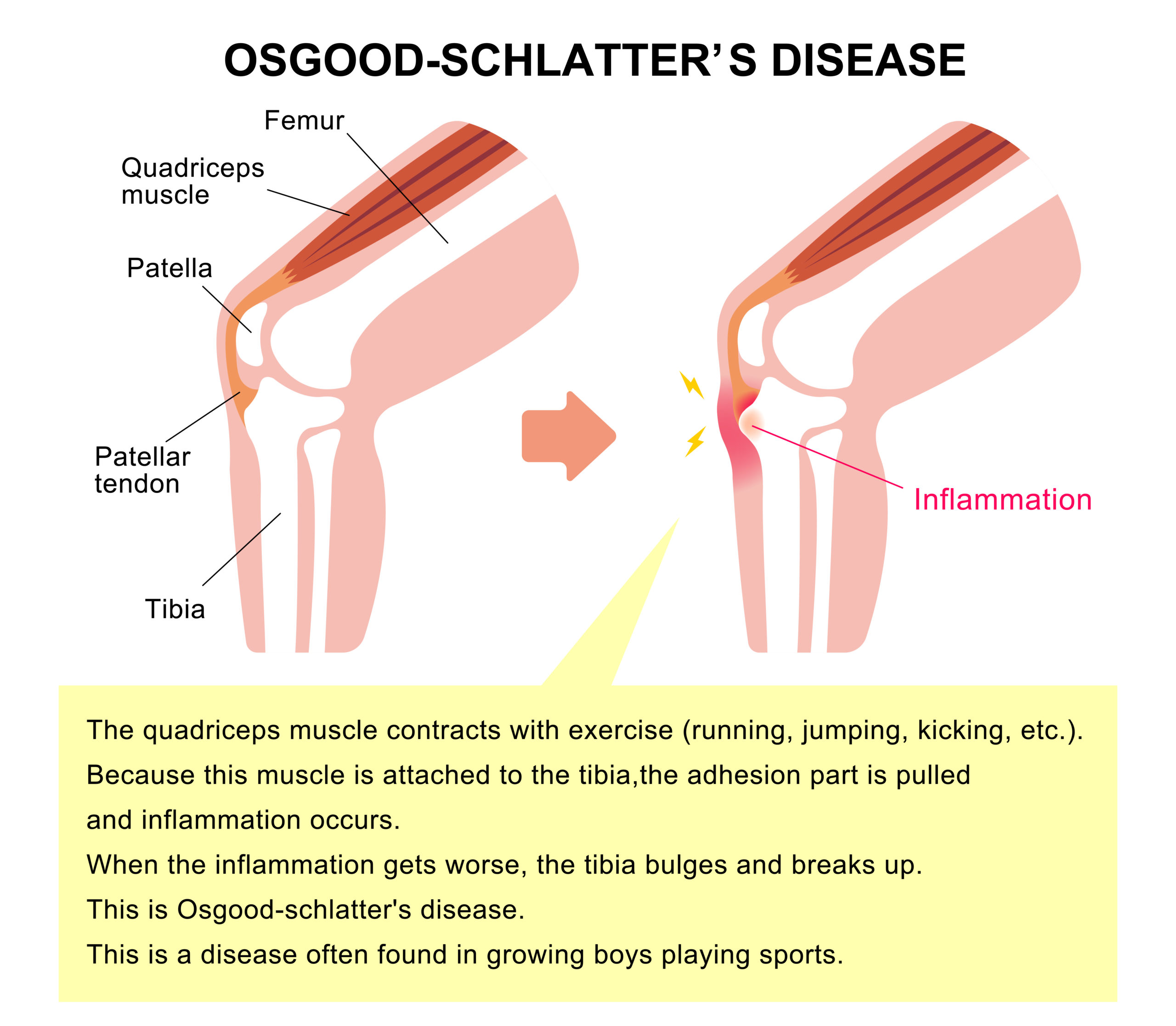Osgood Schlatter disease (OSD) is an inflammatory condition of the tibial tubercle growth plate. The tibial tubercle is a tiny bony prominence at the front of the knee on your shin bone. It is also known as tibial eminence apophysitis.
This condition is part of the group of conditions in children known as apophysitis.
Even though Osgood Schlatter Disease has a fancy and perhaps scary name, it is a benign, self-limiting condition that resolves as the child gets older.
In this article, we will highlight the symptoms of osgood schlatter disease and it’s treatment.
The tibial tubercle is located at the front of the knee on the shin bone. The tibial tubercle is an attachment site for the patella tendon.
The patella ligament is part of the extensor mechanism of the knee which is made up of the quadriceps muscles, the quadriceps tendon, the patella ligament, and the patella.
The extensor mechanism is what allows you to straighten your leg at the knee from a bent position.
Causes of osgood schlatter
There is only one cause of Osgood Schlatter. The rapid growth of the bones in comparison to the muscles during a time of rapid growth in active children.
Bones do get longer as we grow. Muscles do stretch along as the bones grow but during a period of rapid growth, there is a clear discrepancy that can cause the attached muscles to tug on the bone too tightly which results in pain.
Symptoms of Osgood Schlatter disease
- knee pain. The pain is often during activities like kicking or running sports. The pain often resolves during rest.
- A bump at the front of the knee. As shown in the picture above, the tibial tubercle keeps getting bigger.
Do you need to see a paediatric orthopaedic surgeon?
Who is affected?
This is common among active adolescents who are going through a growth spurt.
It’s even more common in the very active adolescents who do kicking sports.
How do you confirm you have Osgood Schlatter?
The diagnosis of Osgood Schlatter is commonly made clinically meaning that a doctor is able to confirm it from a clear history and clinical examination.
X-rays are enough to confirm a diagnosis of Osgood Schlatter’s disease.
What else could cause this pain?
These are differential diagnoses that your doctor needs to rule out,
- Stress fracture of the tibia
- Infection of the bone
- Tumor of bone.
Treatment for Osgood Schlatter disease
First of all, it is important to know that this is self-limiting and is not a life-threatening condition.
- Activity modification; This means that you have to either reduce or stop the activities that you know cause pain, for example, You could swap out running or soccer for cycling or swimming
- Icing the knee. Place an ice pack on the knee when you have pain.
- Rest the leg. Take a day off to recover.
- Physiotherapy; Quadriceps and hamstrings stretching during the phases of rapid growth. Quadriceps can get very tight and pull really hard on the bones causing pain and stiffness.
- Bracing. In very painful knees, some people benefit from a temporary period of bracing like knee sleeves/tape or casts.
Prognosis for osgood schlatter
Osgood Schlatter disease is self-limiting and the pain will resolve with time.
It should not affect the child’s overall growth in height.
In some people, it may leave a permanent prominence at the front of the knee.
Typically this condition isn’t treated with surgery but in some adults, there is a persistence of small bones called ossicles around the tibial tubercle and these can be removed with surgery if they are being a nuisance.
In conclusion, Osgood Schlatter disease is a common condition in active growing adolescents. It presents with knee pain and even though, it isn’t a life-threatening condition, it can be such a nuisance.
Treatment often resolves around physiotherapy, resting, and using some form of pain management.
